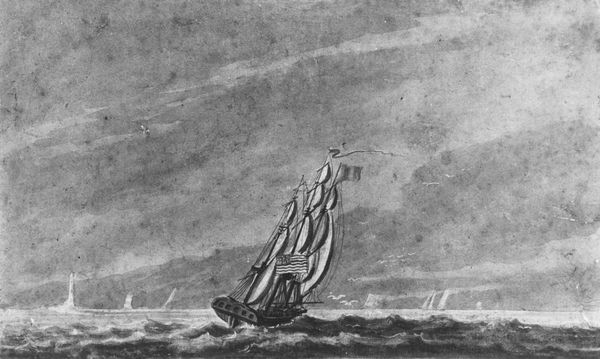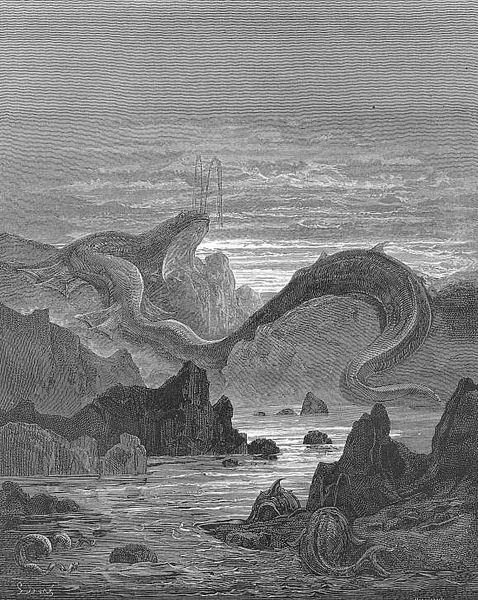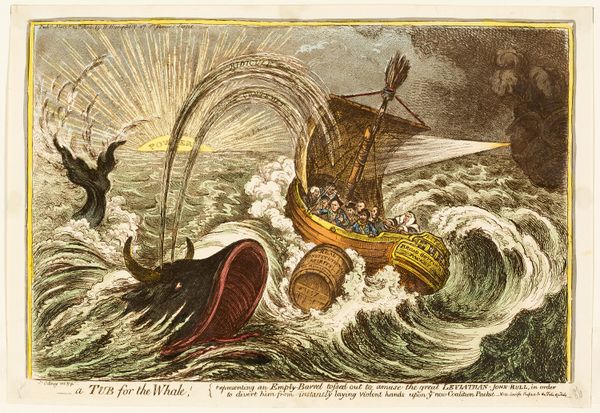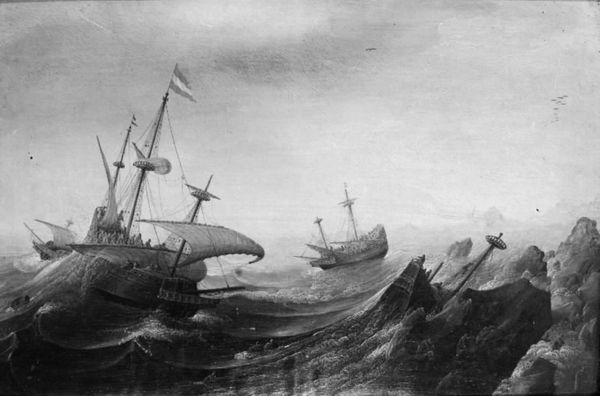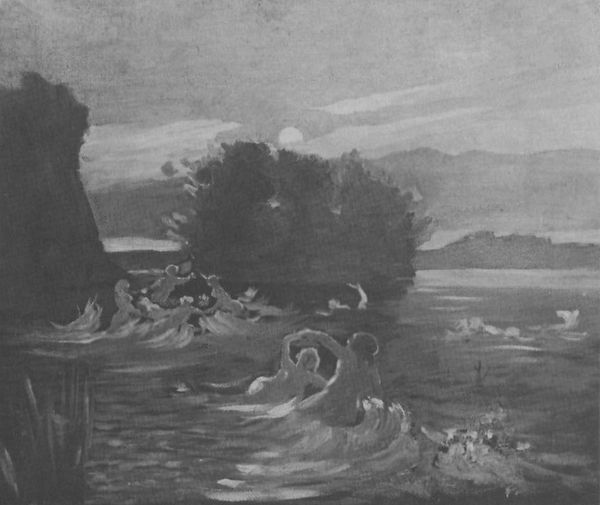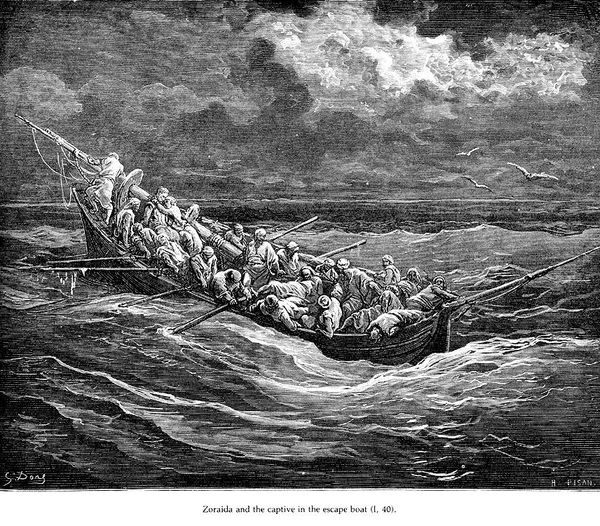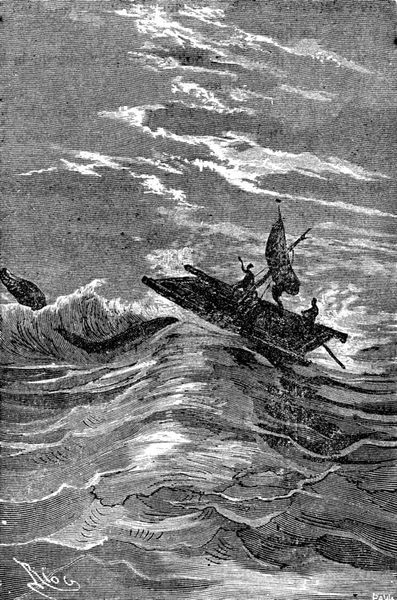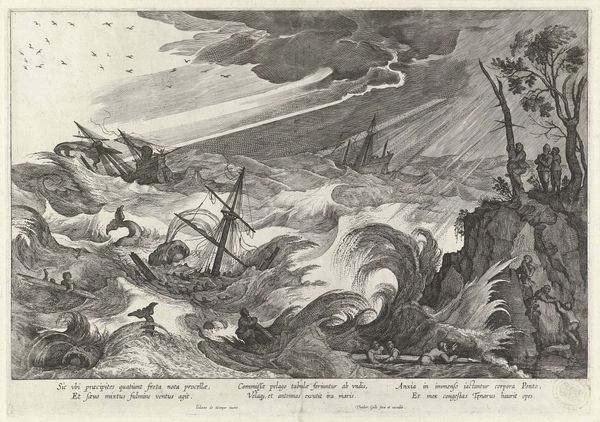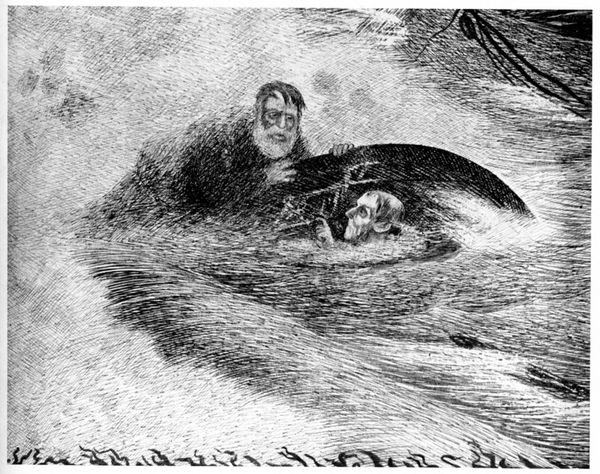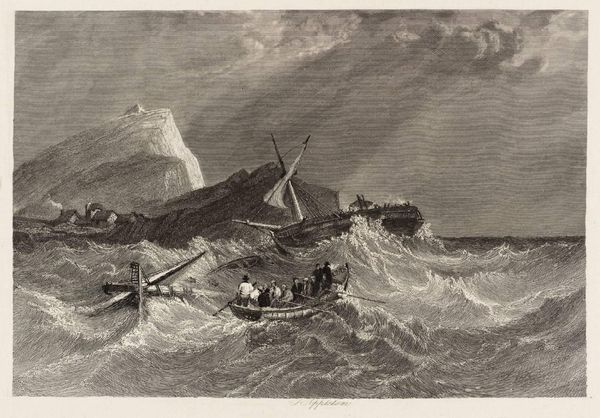
Copyright: Public domain
Curator: I’m immediately struck by the overwhelming sense of dread—that monster’s eyes… it feels primal, this image. Editor: Indeed! The work before us is Theodor Severin Kittelsen’s “Sea Serpent,” created in 1892, rendered in graphite and charcoal. The artist captures a chilling encounter at sea. Curator: And what an encounter it is! Look at how that beast rises from the waves—it dwarfs the little boat and the people in it! I am trying to understand the collective unconscious. This feels connected to Norse myths and legends of maritime dangers. Editor: Precisely! Kittelsen was deeply invested in Norwegian folklore, you see. He used his art as a kind of cultural preservation, reminding a rapidly modernizing society of its ancient roots and beliefs. His dark imagery, especially these sorts of imagined creatures, served a potent symbolic role. This wasn't mere illustration. This reflected widespread anxiety. Curator: You can feel it. Those tight lines, that constrained monochrome palette—it amplifies the emotional impact. Are those people about to become a historical footnote for lunch? And do you feel the symbolic relationship of the monster lurking where the group of seagulls fly? It represents impending change, if not necessarily destruction. Editor: Kittelsen expertly plays with scale here. That contrast, the enormity of the serpent against the fragility of the boat, really highlights the helplessness of humankind against the raw, untamed forces of nature. Also consider the growing nationalist movement at the time—Kittelsen became extremely popular because he was helping Norway define and visualise its cultural roots through its natural environment, making something powerful, relevant, and political, all at once. Curator: Agreed. Beyond a simple sea monster tale, you're revealing cultural anxieties and powerful political context behind this drawing. The artwork serves as a time capsule for society itself, expressing the spirit of 19th-century Norway. Editor: A potent reminder of how art can shape and reflect our shared narrative. Curator: A narrative that remains intensely resonant, even today.
Comments
No comments
Be the first to comment and join the conversation on the ultimate creative platform.

